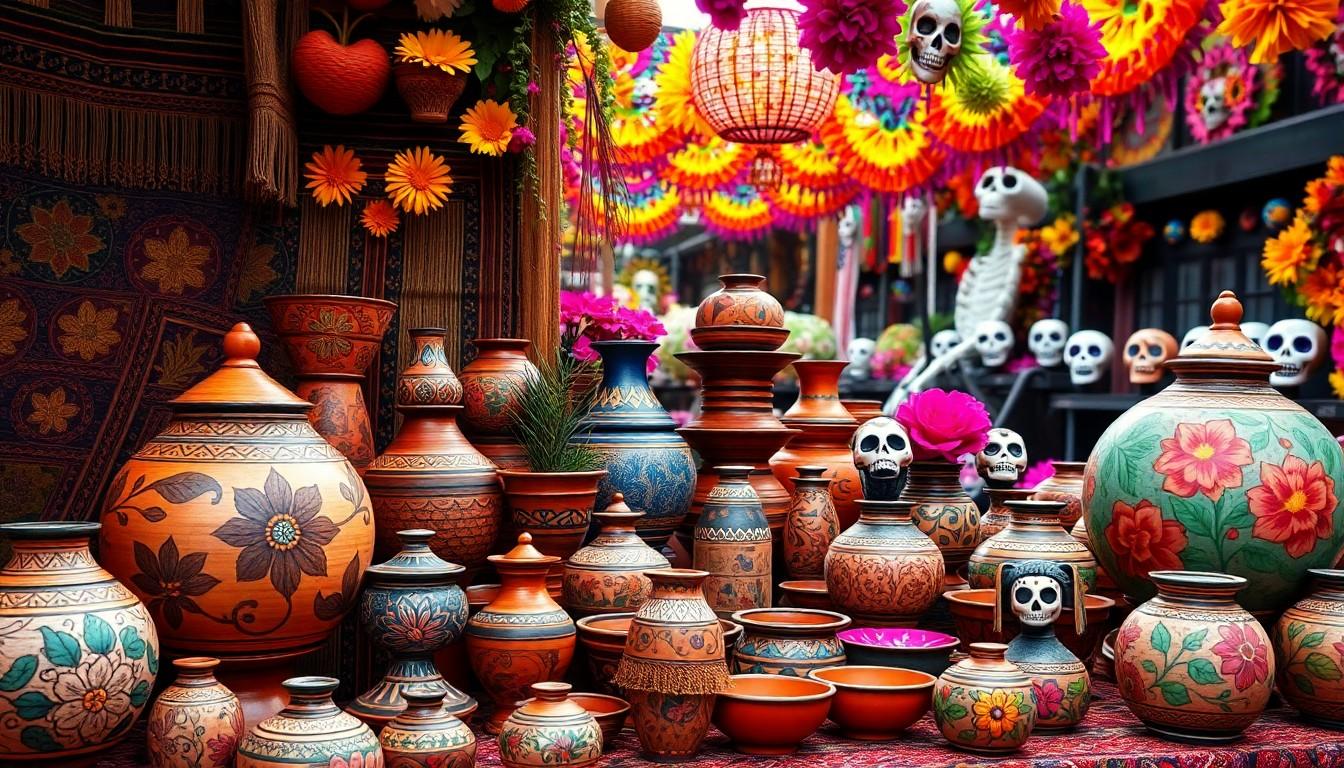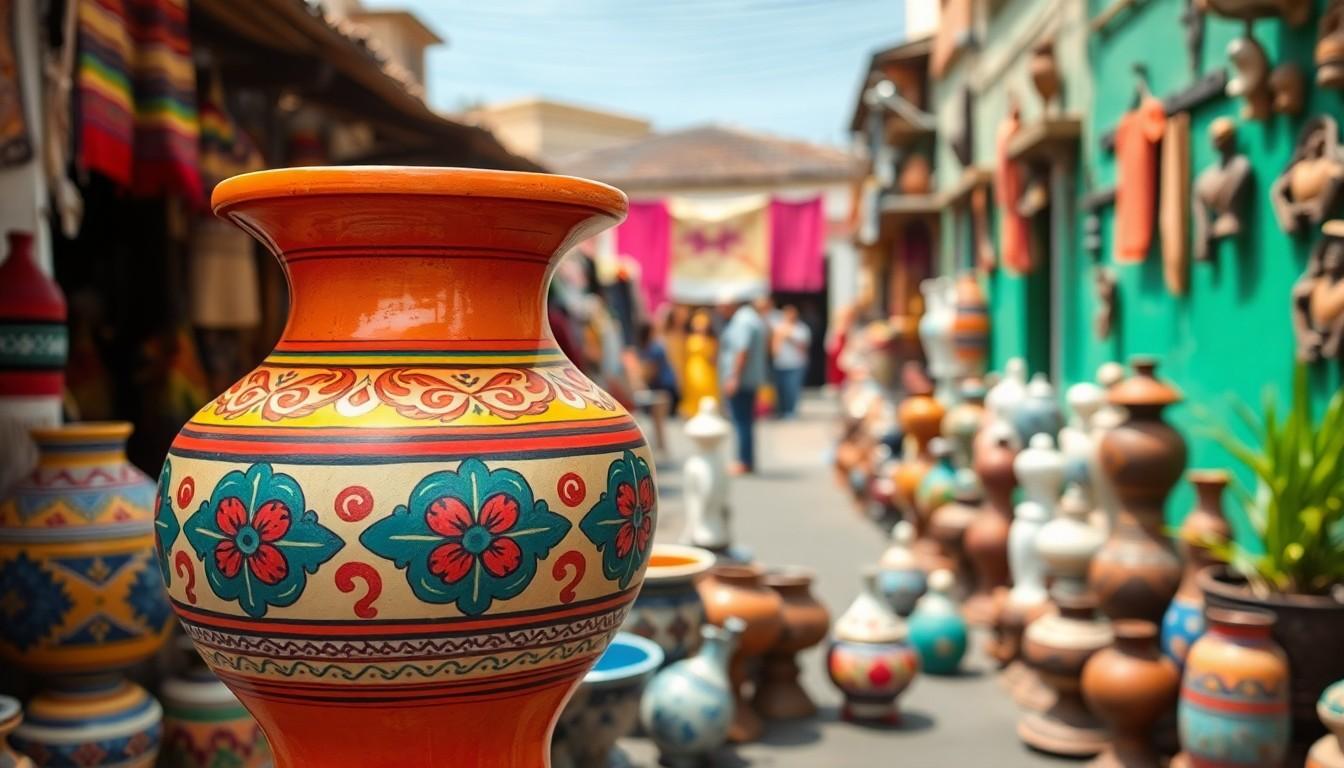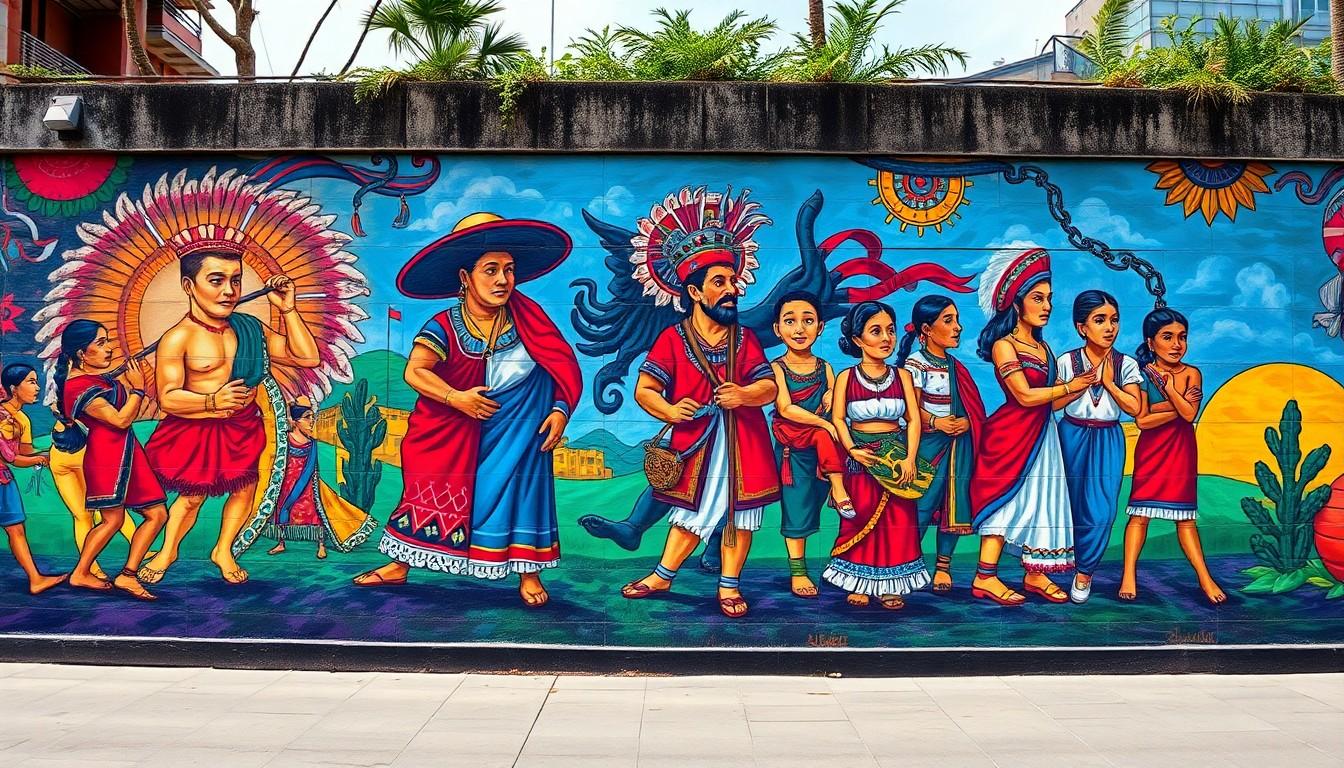Mexican art styles are a vibrant fiesta of colors, textures, and stories that dance off the canvas. From the ancient murals of the Aztecs to the modern expressions of contemporary artists, Mexico’s artistic heritage is as rich as a plate of enchiladas smothered in mole sauce. Each brushstroke tells a tale, inviting viewers to explore the country’s deep cultural roots and lively traditions. Imagine walking through a gallery where every piece feels like a piñata bursting with creativity. Whether it’s the bold lines of folk art or the intricate details of pre-Hispanic sculptures, Mexican art styles offer something for everyone. So grab your sombrero and get ready to dive into a world where art isn’t just seen—it’s experienced, celebrated, and sometimes even danced upon.
Mexican Art Styles
Mexican art styles reflect a rich tapestry of traditions and influences. Pre-Columbian art showcased intricate pottery, textiles, and sculptures, often depicting religious themes and nature. Colonial art introduced European techniques, fusing them with indigenous elements to create unique baroque styles. Muralism emerged in the early 20th century, characterized by large-scale murals that depicted social and political messages. Artists like Diego Rivera and David Alfaro Siqueiros led this movement, using public spaces to convey their vision of Mexico’s identity and history. Contemporary art in Mexico exhibits diversity, combining traditional practices with modern concepts. Influences from global movements can be seen, as artists experiment with various mediums, including digital art and installation pieces. Folk art is another significant aspect, encompassing vibrant crafts such as pottery, weaving, and papel picado. Each piece often reflects local culture, identity, and historical narratives. Traditional motifs and symbols remain prevalent, contributing to the colorful landscape of Mexican art. Throughout history, the evolution of these styles has depicted not only artistic expression but also a reflection of societal changes. Exploring Mexican art means engaging with a cultural narrative that continues to evolve, showcasing the resilience and creativity of its people.Traditional Mexican Art Styles
Traditional Mexican art styles reflect the country’s rich cultural heritage. Various influences contribute to this artistic expression.
Indigenous Art Forms
Indigenous art forms stand out for their historical significance. Pottery showcases intricate designs and functional beauty. Textiles, woven from natural fibers, display vibrant colors and patterns. Sculpture often includes stone carvings representing deities and nature. Each piece communicates cultural beliefs and practices. Unique rituals and ceremonies inspire many indigenous artworks. Celebrations, such as Day of the Dead, are depicted through symbolic design. Furthermore, artists emphasize the connection between their communities and the natural world.Colonial Influences
Colonial influences introduced European styles and techniques to Mexican art. Baroque elements became prominent in religious paintings and architecture. Artists blended indigenous themes with European aesthetics. Richly decorated churches illustrate this fusion of cultures. The use of oil paints and perspective gained popularity during this period. Portraits of colonial elites reflect societal hierarchy and status. Essential artworks from this era helped establish an evolving artistic identity. Each piece served not only religious purposes but also told stories of a complex society.Modern Mexican Art Styles
Modern Mexican art styles reflect a dynamic blend of tradition and innovation. Artists embrace various mediums and techniques, redefining cultural narratives.Muralism
Muralism stands out as a defining approach in modern Mexican art. It emerged in the early 20th century, driven by political and social themes. Iconic figures like Diego Rivera and David Alfaro Siqueiros created large-scale murals that addressed issues of identity, oppression, and revolution. These murals often adorned public buildings, making art accessible to everyone. Themes resonated with the working class, celebrating their struggles and achievements. Locations such as Mexico City showcase these massive artworks, inviting viewers to reflect on historical events. The vibrant colors and powerful imagery leave a lasting impact, showcasing the energy of Mexican culture.Mexican Folk Art
Mexican folk art encompasses a rich variety of handcrafted items reflecting local traditions and cultural heritage. It includes pottery, textiles, and intricate papel picado. Regional artisans create these unique pieces, often inspired by local legends and rituals. Bright colors and detailed designs characterize each item, offering a glimpse into Mexico’s diverse communities. Artisans frequently collaborate with families and villages, maintaining centuries-old techniques. Items like alebrijes, fantastical wooden carvings, exemplify this vibrant tradition. Festivals celebrate folk art, showcasing these crafts and preserving the cultural identity of Mexico.Notable Mexican Artists and Their Contributions
 Mexican art boasts a vibrant legacy shaped by its influential artists. Their works often reflect cultural heritage and social issues.
Mexican art boasts a vibrant legacy shaped by its influential artists. Their works often reflect cultural heritage and social issues.

